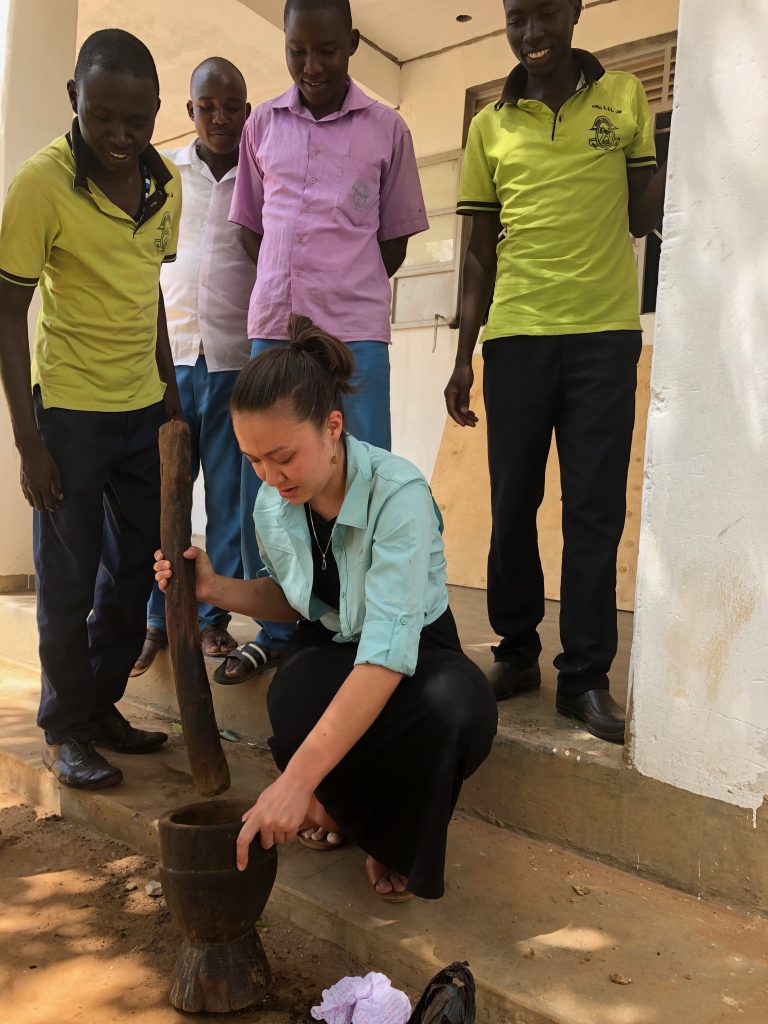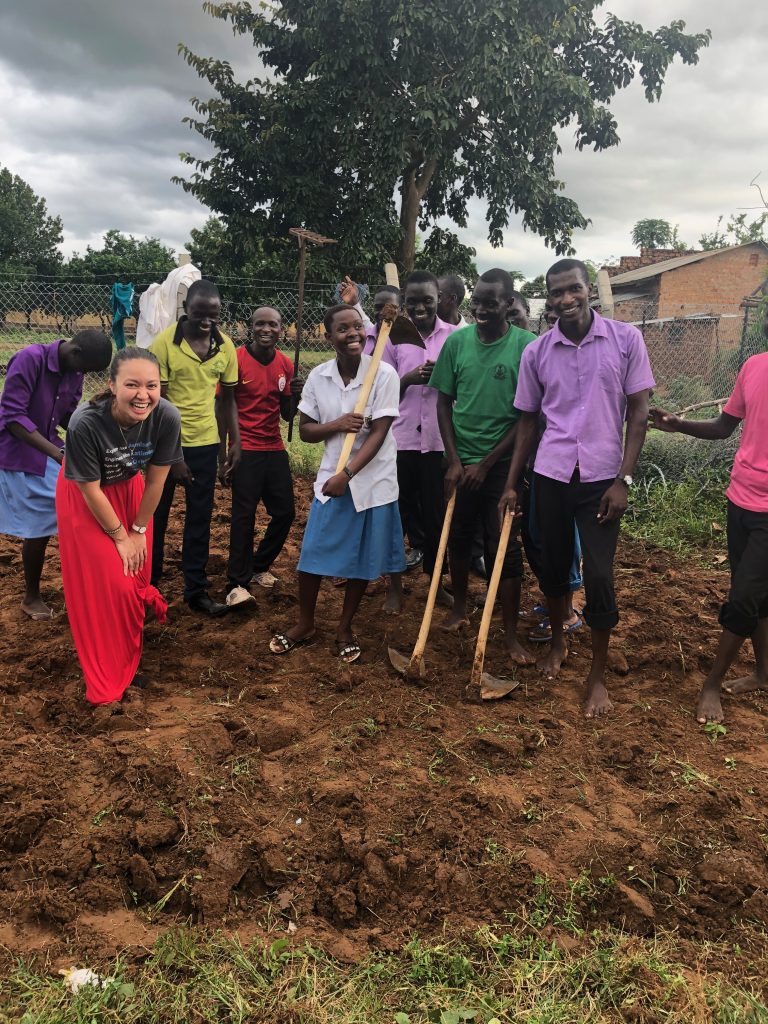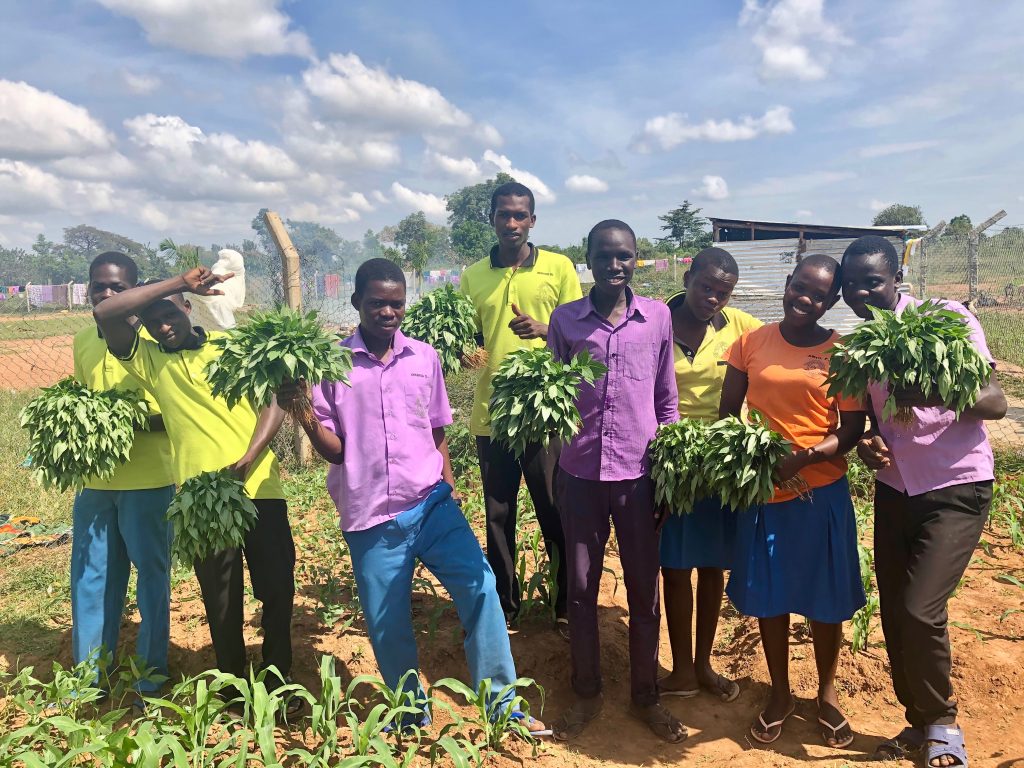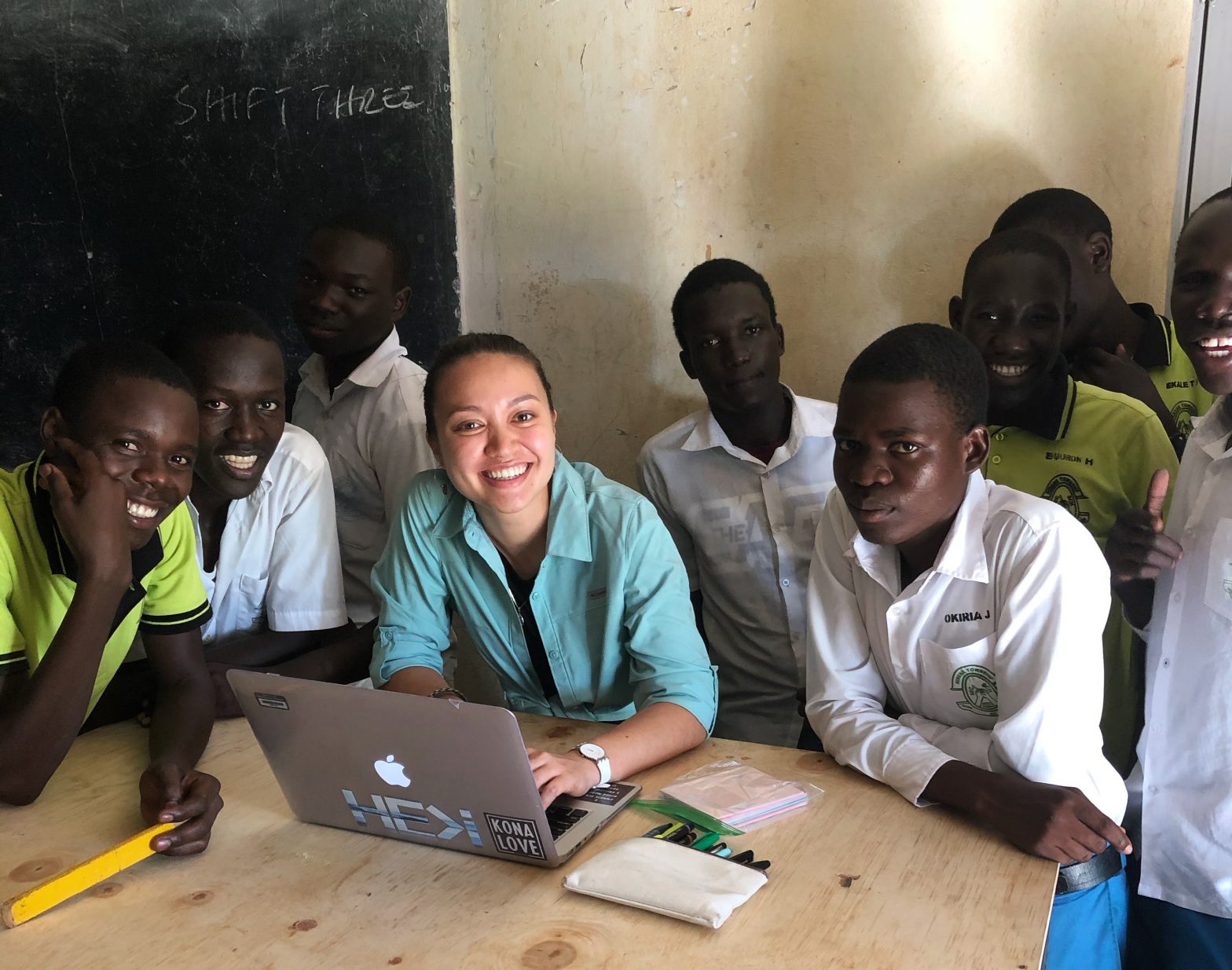In this post, we hear from alumna Annalise “Cici” Klein (’14) about how her cross-divisional majors sparked a global pursuit of vocation post-college.
On a humid Saturday morning in Serere, Uganda, three high school boys stood at the front of a large classroom, addressing a packed room of several hundred parents. One boy wrapped beef bones in aluminum foil. Another pounded a large wooden mortar and pestle. The third boy held a microphone, speaking to the crowd in English and Ateso. And there I was facing them all, in a cracked and faded blue plastic chair, sandwiched between the district commissioner and the school principal.
The boys were part of the Senior Five chemistry class at Serere Township Secondary School, a boarding school of 1,300 students in rural Eastern Uganda. I was there as a STEM education specialist on a six-week fellowship through the Fulbright Distinguished Award in Teaching Program in the fall of 2019.

In my six weeks in Serere, I built a new vision for science education with local teachers, one that fostered 21st-century skills, including collaboration and critical thinking, and moved away from the colonial-rooted system of teacher lectures that lacked cultural relevance and real-world application.
We began with posing some questions to the Senior Five chemistry class around agricultural issues in the community. Over 90% of the students come from small subsistence farms, and agriculture plays an important role in their families’ well-being. While Uganda was once known for its highly fertile soil, it is losing valuable nutrients at an exponential rate not observed anywhere else in the world.1 We asked the students to research ways in which they could apply their knowledge of chemistry to address this problem.
The students made a goal of producing a fertilizer rich in NPK (nitrogen, phosphorus, and potassium) made from local materials. After scavenging some old cow bones from the butcher’s shop down the road, the students roasted them over a charcoal fire, ground it into a fine powder, mixed it with urine, and dried it in the sun. The fertilizer was tested on cowpea and maize seeds, which they planted on a plot in the corner of the school yard. On that Saturday morning, as they presented their initial findings to their parents, the room clung to each word, some parents leaning forward to catch every detail, others scribbling down notes.
Throughout this project, students and teachers began to witness the intoxicating effects of an education that empowers. In my planning workshops with the teachers, I used the following analogy to demonstrate the philosophical shift:
In the traditional model of education, if knowledge is water, our students’ heads are empty buckets. We expect them to fill up by compliantly copying notes, then we assess them by tipping the bucket and letting the contents spill out exactly how they entered. However, in a 21st-century skills model, if knowledge is water, our students are large, wooden water wheels used in rivers to power mills. When water is added, it creates movement, power, and energy. Likewise, by focusing a class on problem solving and community application, it facilitates original discussion, innovative ideas, and student ownership.

My own experience with waterwheel education traces back before my career in science education. At Hope, I was nurtured, surrounded by professors and staff who were brave enough and cared enough to speak into my vocation, not just my degree. As a Chemistry and English double major at Hope, I had many opportunities to apply the academic knowledge and skills that I was cultivating. Taking inorganic chemistry and TA-ing organic chemistry sharpened my analytical thinking and mental stamina, while courses like Latin American literature and poetry workshops taught me a deep appreciation for how detailed observations mold one’s perspective on life.
Any student of Heather Sellers will recall her frequent reference to Robert Olen Butler’s “compost pile” analogy on writing: our writing comes from our life compost pile, an ever-growing, ever-decomposing mound of experiences and memories. Our best writing comes from the white-hot center, and the older we get, the richer our compost pile becomes. The stories our class read came from authors who had massive compost piles with searing white-hot centers — people like Louise Erdrich, Amy Bloom, Tim O’Brien, Marion Winik, and Elizabeth Strout, just to name a few.
By the time junior year rolled around, I stood at a crossroads, thinking, “MCAT or real world?” and it was those lessons from my English degree that pulled me toward the latter. I gravitated towards a vocation that I felt would allow me to collect stories, building my own compost pile to produce richer soil.
After graduation, I joined Teach for America and taught eighth grade science in a small coffee farm community in South Kona, Hawai’i. I met bright students who struggled to translate that brilliance onto paper because of language barriers or instability at home. I taught a STEAM summer program for Native Hawaiian students and gathered valuable lessons on the importance of culturally relevant science curriculum that is accessible for all.
After three years on the island, I moved to the Bay Area to teach chemistry and AP Chemistry at a charter school in East San Jose and developed projects for my students connecting chemistry to social justice issues. The opportunity to work in Uganda last fall showed me new ways in which science can inspire innovation in a community.
On my last day in Serere, the students checked on the experimental plot and discovered with great pride that the plants in fertilizer had grown three times as fast as the control. They harvested the leaves, boiled them down over a charcoal fire, and together, we ate a final meal — hopefully the only time I will ever eat the products of an experiment!

As I said goodbye to the students of Serere and prepared to return to my students in San Jose, I left with new stories that enriched my perspective on educational equity and science instruction in the 21st-century. These experiences continue to cultivate my vocation, one that partners with students to hone their unique voices, influence change in their communities, and diversify representation in STEM. My compost pile overfloweth.
- http://extwprlegs1.fao.org/docs/pdf/uga172925.pdf ↩


